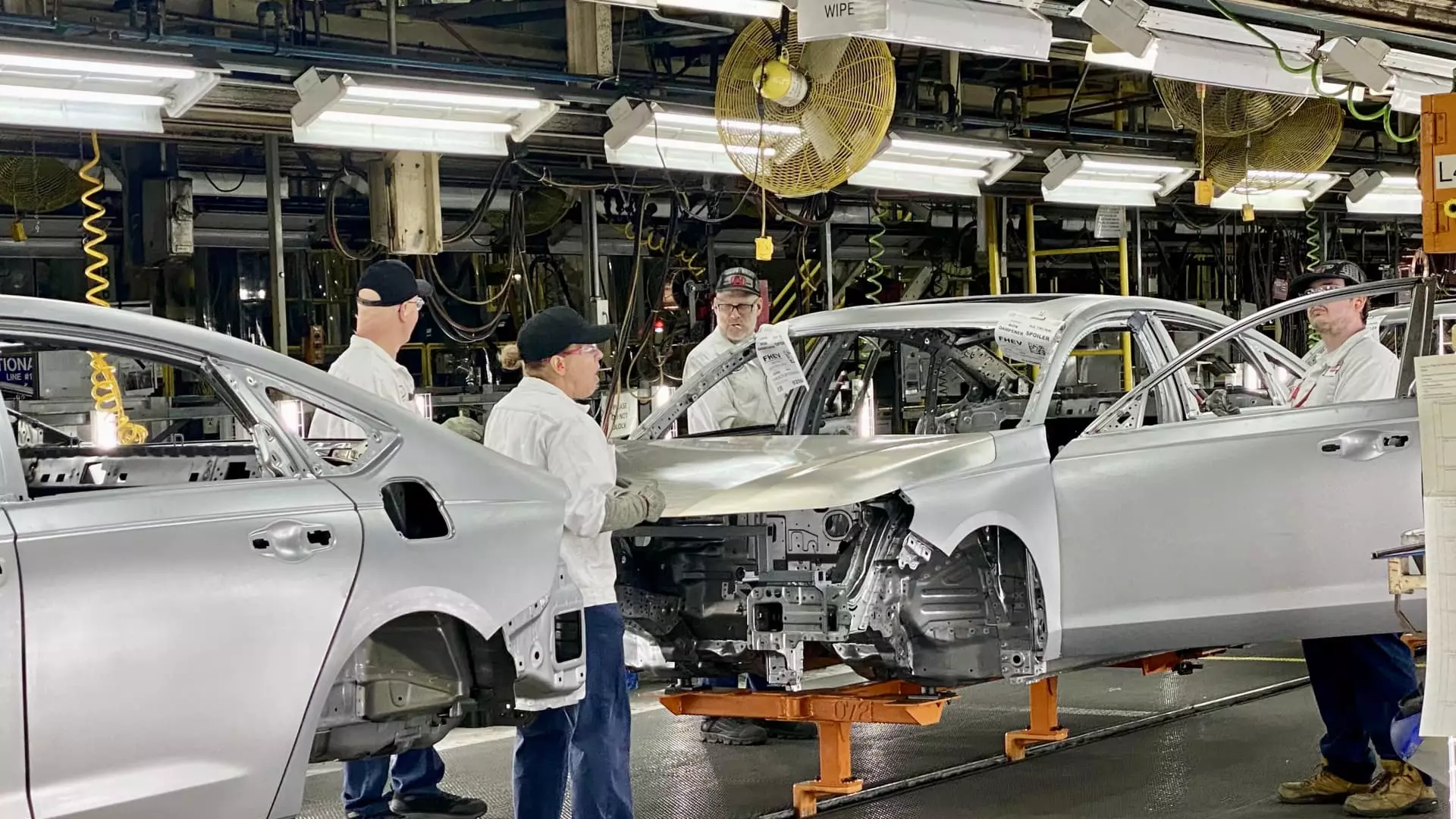Honda Motor Company’s recent announcement regarding its substantial investment in electric vehicle (EV) production in Ohio marks not only a significant financial commitment but also a transformative shift in the company’s operational strategy. For a manufacturer famed for its Japanese roots and innovations, setting the stage for its future in a state known for traditional automotive production highlights the evolution of Honda’s global manufacturing philosophy. This move, involving over $1 billion—an increase from the initially projected $700 million—opens a new chapter for the 75-year-old giant, positioning Ohio as a central hub for Honda’s electrical manufacturing undertakings.
At the heart of Honda’s ambitious plans in Marysville, Ohio, are the six state-of-the-art “giga presses.” These massive machines, introduced to the automotive sector by Tesla, will dramatically alter how Honda manufactures its vehicles, particularly in the realm of electric vehicle components. By implementing a new “cell” manufacturing system for its upcoming battery cases, Honda is setting up a facility capable of producing both conventional vehicles and zero-emissions models on the same assembly line. This versatility is vital as automakers globally grapple with shifting consumer preferences amid rising environmental consciousness and increasing regulatory pressures.
Mike Fischer, Honda’s North American lead for battery-electric vehicle projects, emphasized the significance of these advancements during a guided tour of the facility. He stated, “The Honda EV hub in Ohio is establishing the global standard for EV production.” This statement not only reflects the company’s confidence in its new facility but also indicates a willingness to redefine traditional manufacturing paradigms that have long been a standard across the industry.
The strategic investments in Ohio have broader implications, especially considering recent political shifts in the United States. Initially announced in October 2022 amidst the Biden administration’s push for on-shoring manufacturing, Honda’s decision is further reinforced by potential tariff threats on imported vehicles. By centering EV production in Ohio, Honda appears to be not just adapting to market demands but also proactively addressing geopolitical uncertainties.
In the current automotive landscape, where manufacturers like Honda face challenges such as supply chain disruptions and regulatory changes, this investment represents a calculated risk. Having produced over a million vehicles across its U.S. plants in 2024—64% of which were sold domestically—Honda is aware of the need to enhance its operational efficiencies while also being aligned with governmental goals for sustainable manufacturing practices.
The introduction of high-pressure die casting machines is a keystone in Honda’s manufacturing strategy. By utilizing these machines, which can exert over 6,000 tons of pressure, Honda can potentially revolutionize its cost structure. As described by experts at S&P Global Mobility, this technique could significantly reduce manufacturing costs by allowing the company to unify several body parts into a single module, thereby eliminating the time-consuming process of welding.
What sets Honda’s approach apart is its transition toward flexible manufacturing. With nearly 60 dedicated manufacturing “cells,” the assembly process is designed to prevent bottlenecks, allowing for concurrent work processes rather than a purely linear assembly line. This innovative production layout reflects a reimagined approach to manufacturing, aimed at achieving efficiency while maintaining adaptability to changing market and production needs.
In conjunction with production innovations, Honda is committing to ambitious environmental goals. The company’s aim for carbon neutrality by 2050, alongside plans to exclusively market zero-emission vehicles by 2040, speaks to a critical pivot in an era of heightened environmental accountability. While some competitors have retraced similar promises in light of market realities, Honda is doubling down on its commitment, striving to align its operational practices with sustainable technologies.
In his remarks, Senior Vice President Bob Schwyn articulated the vision for this new operational landscape: “We’re using the opportunity to reimagine our approach to manufacturing.” This forward-thinking outlook not only empowers Honda to lead in the EV market but also underscores a dedication to creating long-lasting value through environmental stewardship, setting an example for other manufacturers to follow.
As Honda embarks on this journey of transformation within its Ohio facilities, the implications extend beyond immediate financial impacts or production changes. This investment and strategic shift signify Honda’s attempt to balance rapid technological advancements with a commitment to sustainability while cementing its place as a frontrunner in the evolving automotive landscape. With its innovative practices and environmentally responsible initiatives, Honda is not just adapting to the future; it is actively shaping it. This marks a pivotal moment for the automaker, reaffirming its legacy while preparing to lead in a new era defined by electric mobility and sustainability.

